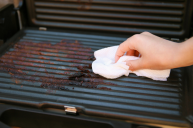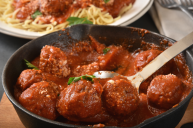The culinary must-have of Southern cooking remains the classic cast-iron skillet. You can't have crispy cornbread without that heavy, perfectly seasoned pan ready to go into the oven. Sadly, plenty of these beautiful treasures sit dormant at flea markets and yard sales across the country.
Naked cast-iron tends to collect rust almost immediately, often as a result of sitting in a shed or garage. They build up a healthy, albeit hideous, oxidized coating. Most buyers shy away from purchasing one of these diamonds in the rough, and most sellers are ready to get it out of sight for next to nothing.
If they only knew how easy it is to restore rusted cast-iron, without heavy scrubbing or toxic chemicals. The team over at Patch realized that apple cider vinegar packs a punch in the rust removal department.
Cast-Iron Restoration Supplies
A medium-sized tub
2 or 3 gallons of apple cider vinegar
Wire brushes
Olive oil for seasoning
Step 1
Place the apple cider vinegar in the tub in a well-ventilated area, preferably outside. Place the rusted pan in the vinegar and allow it to soak for two or three days.
Step 2
Remove the pan from the vinegar, wipe away the built up goo and rinse it with water. There will probably be stubborn areas still covered in a little rust so apply a wire brush to these rusty patches to reveal the metal underneath.
Step 3
Finally, the most important step in the restoration process is the seasoning. Coat the pan with olive oil or your favorite cooking oil. Bake the pan for about an hour at 350 degrees. Repeat this process until you have a seasoned and sealed pan.




